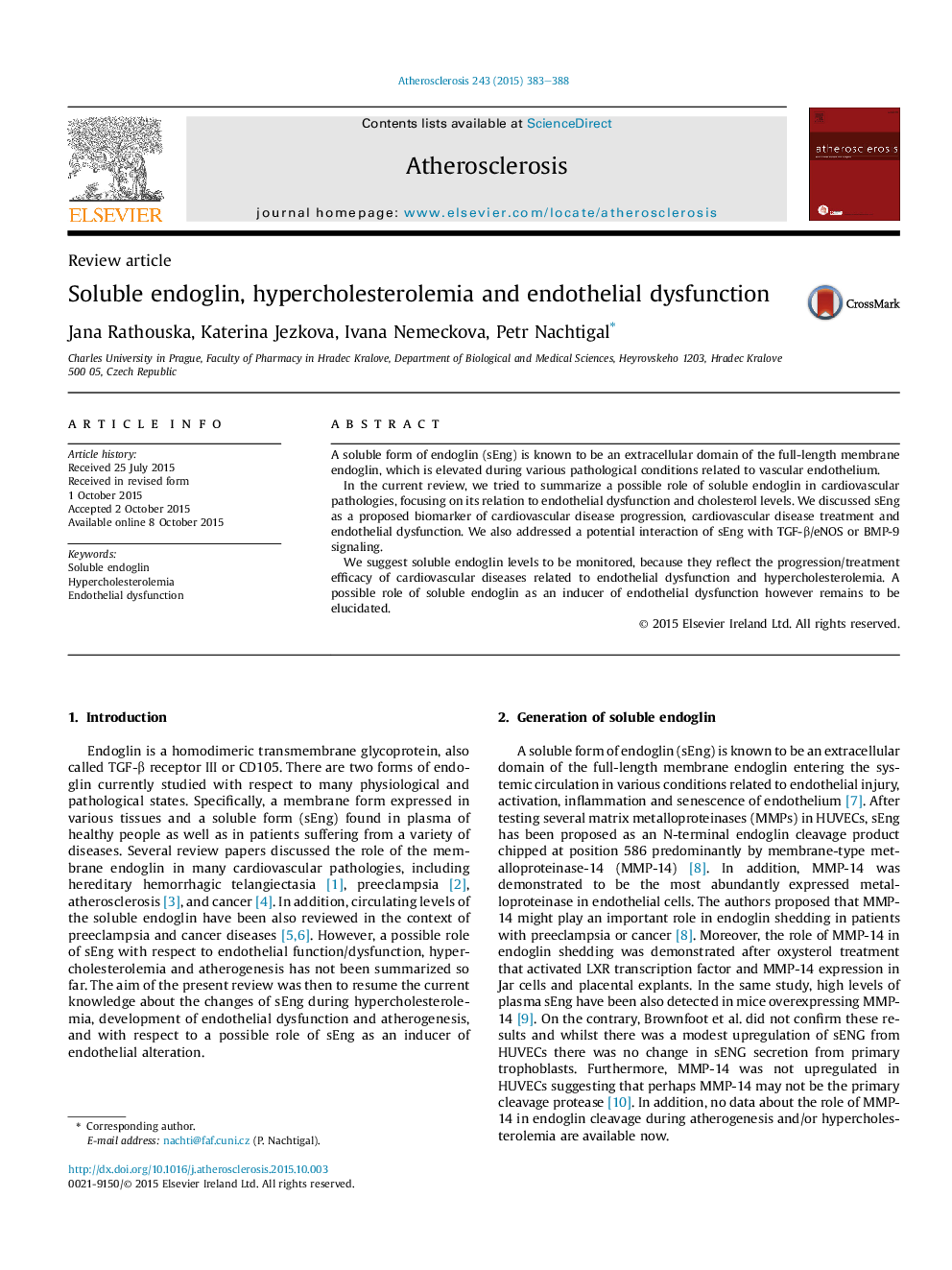| Article ID | Journal | Published Year | Pages | File Type |
|---|---|---|---|---|
| 2892642 | Atherosclerosis | 2015 | 6 Pages |
•sEng levels (increase) might be considered as a biomarker related to endothelial dysfunction and hypercholesterolemia.•sEng levels might be monitored during the treatment of diseases related to endothelial dysfunction and hypercholesterolemia.•sEng levels might be related to membrane endoglin expression that was not demonstrated during atherogenesis in aorta so far.•sEng is able to induce signs of endothelial dysfunction, however with no direct evidence in atherosclerosis-prone arteries.•sEng is able to interact with TGF-β/eNOS and/or BMP-9 signaling, which might result in endothelial function impairment.
A soluble form of endoglin (sEng) is known to be an extracellular domain of the full-length membrane endoglin, which is elevated during various pathological conditions related to vascular endothelium.In the current review, we tried to summarize a possible role of soluble endoglin in cardiovascular pathologies, focusing on its relation to endothelial dysfunction and cholesterol levels. We discussed sEng as a proposed biomarker of cardiovascular disease progression, cardiovascular disease treatment and endothelial dysfunction. We also addressed a potential interaction of sEng with TGF-β/eNOS or BMP-9 signaling.We suggest soluble endoglin levels to be monitored, because they reflect the progression/treatment efficacy of cardiovascular diseases related to endothelial dysfunction and hypercholesterolemia. A possible role of soluble endoglin as an inducer of endothelial dysfunction however remains to be elucidated.
